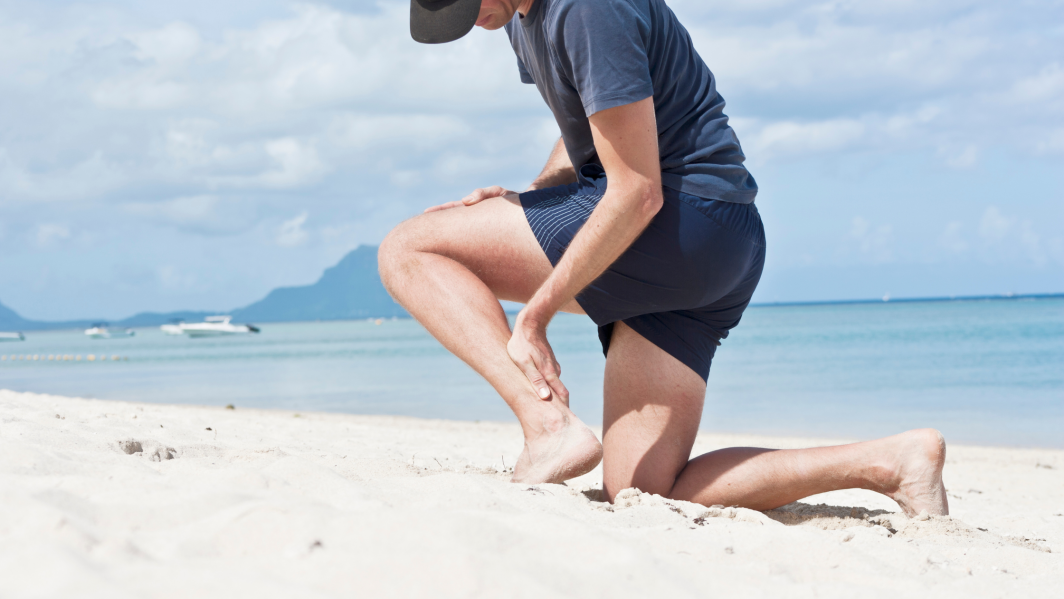
THE FIX
Rest, icing, and strapping can relieve symptoms in the early/acute stages. Reducing training intensity and volume may be required, possibly even complete rest for a few weeks depending on pain and the severity of the injury. The earlier you get treatment the shorter your time off running in the ‘long run’. Soft tissue massage can be used to release tight structures throughout the lower limb and back. Physical therapy treatment will mobilise tight structures, possibly use acupuncture and prescribe rehab exercises to strengthen your calves, hamstrings, glutes and core.
Stretching is also a key component to rehab. Eccentric heel drop exercises (lengthening under load), taught by your physical therapist, will be an essential part of your recovery. Advice about your shoes, orthotics and running technique can help. Importantly, keep an eye on your training. Don’t do too much, or go too hard, too quickly.
THE PREVENTION
When people experience Achilles tendinopathy, it often starts as a simple feeling of stiffness in the tendon. If you take steps to increase flexibility, strengthen the ankle and calf muscles and decrease stress on the tendon at the first sign of stiffness, it’s possible to prevent the problem from escalating.
One of the easiest ways to prevent Achilles tendinopathy is to keep the tendon strong and flexible. Regular strengthening of the calf, especially eccentric exercises will be beneficial, along with a regular stretching programme.
It is important to strengthen the entire limb from the pelvis, core, hip, gluteus muscles and hamstrings as these will all ensure the entire kinematic chain is working efficiently and minimising overload of the achilles tendon. Then address any underlying risk factors (like shoes, orthotics) and finally a key prevention strategy is monitoring your training capacity. Slow and steady wins the race!
Feeling pain and need a massage?
Book now -> https://www.massagemountainhealing.com/book-now/

